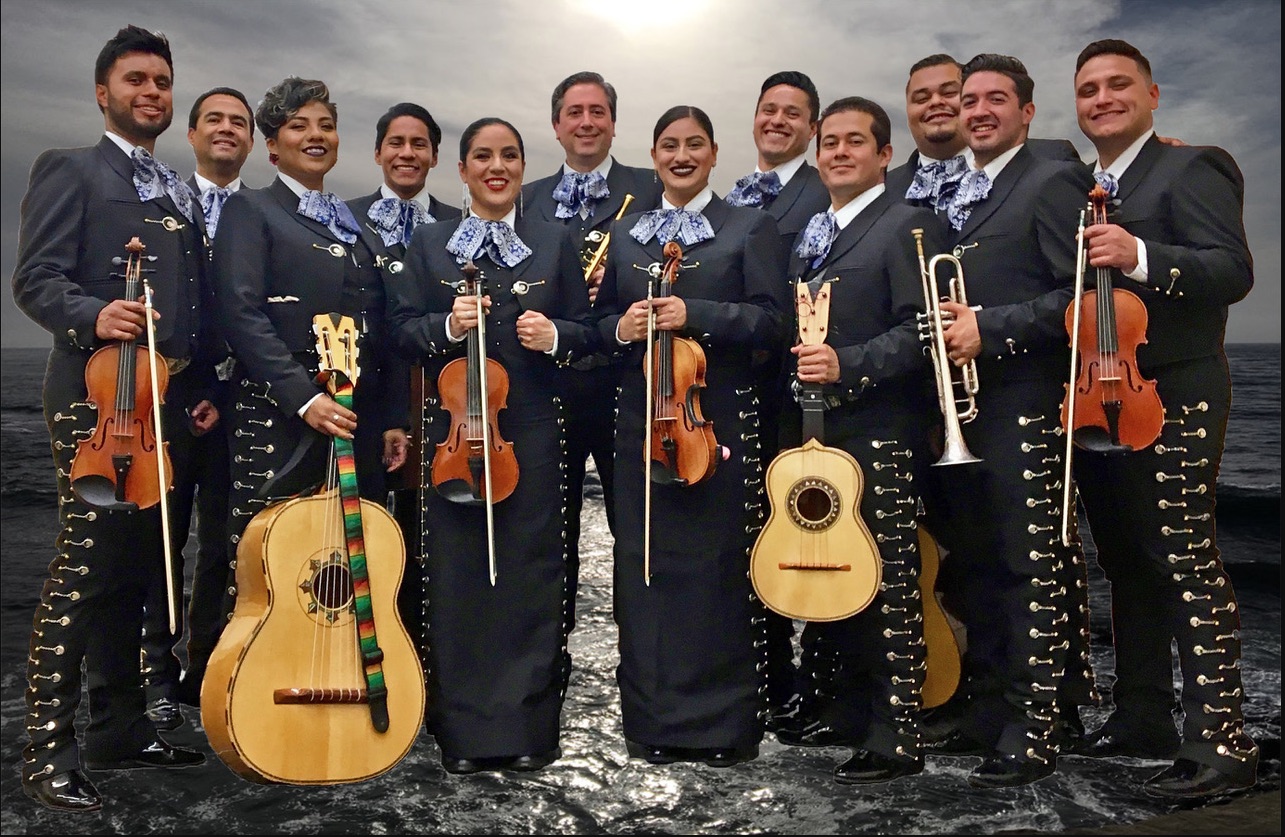|
Chamber
FAMILIAR AND NEW - TRIO NAVARRO'S SPRING CONCERT IN WEILL
by Terry McNeill
Sunday, April 21, 2024
Symphony
MONUMENTAL MAHLER 5TH IN SO CO PHIL'S SEASON ENDING CONCERT
by Terry McNeill
Sunday, April 14, 2024
Chamber
OAKMONT SEASON CLOSES WITH STRAUSS' PASSIONATE SONATA
by Terry McNeill
Thursday, April 11, 2024
Chamber
MORE GOLD THAN KORN AT ALEXANDER SQ CONCERT
by Terry McNeill
Sunday, April 7, 2024
Choral and Vocal
VIBRANT GOOD FRIDAY REQUIEM AT CHURCH OF THE ROSES
by Pamela Hicks Gailey
Friday, March 29, 2024
TWO OLD, TWO NEW AT THE SR SYMPHONY'S MARCH CONCERT IN WEILL
by Peter Lert
Saturday, March 23, 2024
Chamber
NOT A SEVENTH BUT A FIRST AT SPRING LAKE VILLAGE CONCERT
by Terry McNeill
Wednesday, March 20, 2024
THIRTY-THREE PLUS VARIATIONS AND AN OCEAN VIEW
by Terry McNeill
Saturday, March 16, 2024
Choral and Vocal
A ST. JOHN PASSION FOR THE AGES
by Abby Wasserman
Friday, March 8, 2024
Choral and Vocal
SPLENDID SCHUBERT SONGS IN SANET ALLEN RECITAL
by Terry McNeill
Saturday, March 2, 2024
|
 |
 Champaña Nevin |
MARIACHI MEETS ORCHESTRA AT THE SANTA ROSA SYMPHONY
by Steve Osborn
Sunday, June 12, 2022
Quick, which semiclassical cantata includes the immortal line, “But the workers received from their employers an insurance that covered major medical expenses”? The answer is “Los Braceros,” a cantata by Enrico Chapela Barba for mariachi and orchestra suffused with great music but in desperate need of a better libretto and some rudimentary staging. The Santa Rosa Symphony premiered the work over the weekend (I heard the second performance June 12).
The cantata employs four vocal soloists and Mariachi Champaña Nevin, a full band with trumpets, violins, various types of guitars, and more than a dozen microphones that make the mariachi audible above the orchestra. The band also doubles as a chorus on occasion. The vocal soloists and the band stretch almost all the way across the stage in front of the orchestra, with the soloists on stage right and the band on stage left.
The soloists ranged from the well-known opera singers Rafael Jorge Negrete (baritone) and soprano Mónica Ábrego to the mariachi soloists Perry Chacón Jr. (tenor) and contralto Giselle Vallejo. Unfortunately, they all wore hidden body mikes, transforming their strong natural voices into something more befitting a Broadway show. The shortcomings of this technology were exposed right at the beginning, when one of the soloists’ body mikes failed to turn on. The volume and quality of the individual mikes was also a problem, with Ms. Vallejo’s much louder and more artificial sounding than the others.
Setting all that aside, the music was consistently good. Chapela Barba has a knack for weaving the mariachi players into the orchestral parts. The most prominent mariachi sound was the strumming guitars, which added considerably to the string texture.
The story of the cantata, which takes place at the end of the Bracero program in 1964, is told in nine scenes, beginning with the tenor Pedro wooing the contralto Consuela, much to the consternation of her parents, the baritone Jorge and the soprano Dolores. The audience had to imagine the scene because not a hint of staging was to be found. Jorge is concerned that Pedro wants to become a bracero, so Jorge launches into an aria that disparages the program, despite its major medical insurance. The music is a mixture of traditional mariachi melodies with often thrilling modern orchestrations. The climactic scene occurs after Pedro migrates to California and ends up in (where else?) Santa Rosa. Accompanied by strings that sound like a Bernard Herrmann movie score, Pedro sings passionately about how his employer “signed the application to start the procedure to gain my permanent residency.” Somehow it doesn’t trip off the tongue, not even in Spanish.
Fortunately, the rest of the concert was libretto-free. The opener was Arturo Márquez’s oft-played “Danzón No. 2,” and the second half was occupied by fountains and pines of Rome, as depicted by Respighi. Made famous by conductor Gustavo Dudamel’s spirited renditions, the “Danzón” becomes somewhat threadbare after repeated hearings. The Symphony’s performance was technically adept, with a sharply etched trumpet solo, but it lacked Dudamel’s extra swing. In contrast, the Respighi symphonic poems were as good as one could hope.
“The Fountains of Rome” began with lovely shimmering strings and a talented woodwind ensemble trading off short solos. Conductor Francesco Lecce-Chong set a graceful tempo that kept the music flowing seamlessly from the fountain of Valle Giulia to its brethren at Triton, Trevi, and the Villa Medici.
An organ loomed large at the rear of the stage, and all its stops seemed to be pulled out by the time the other instruments reached the Trevi fountain. The bass pedals shook the rafters as the other stage occupants contributed to the sound. It was wonderful to hear the full orchestra in all its resplendent glory, followed by haunting bells and a long pause at the end.
“The Pines of Rome” is well deserving of its status as an orchestral staple. This performance began at the Villa Borghese with superb playing from the French horns and moved to the Catacombs, where a dramatic offstage trumpet solo led the way through the depths. At the Janiculum, the piano, clarinet, and cello solos evolved into a dense orchestration that sounded almost like Messiaen, capped by a star turn from a recorded nightingale.
No sooner had the nightingale finished than the troops began marching up the Via Appia. The timpani was relentless as the orchestral texture gradually built in size and volume. Mr. Lecce-Chong remained calm, keeping a steady beat as the orchestra continued to swell, culminating in a tremendous crash with the organ playing full out. It was a convincing performance.
Reprinted by permission from San Francisco Classical Voice
|

